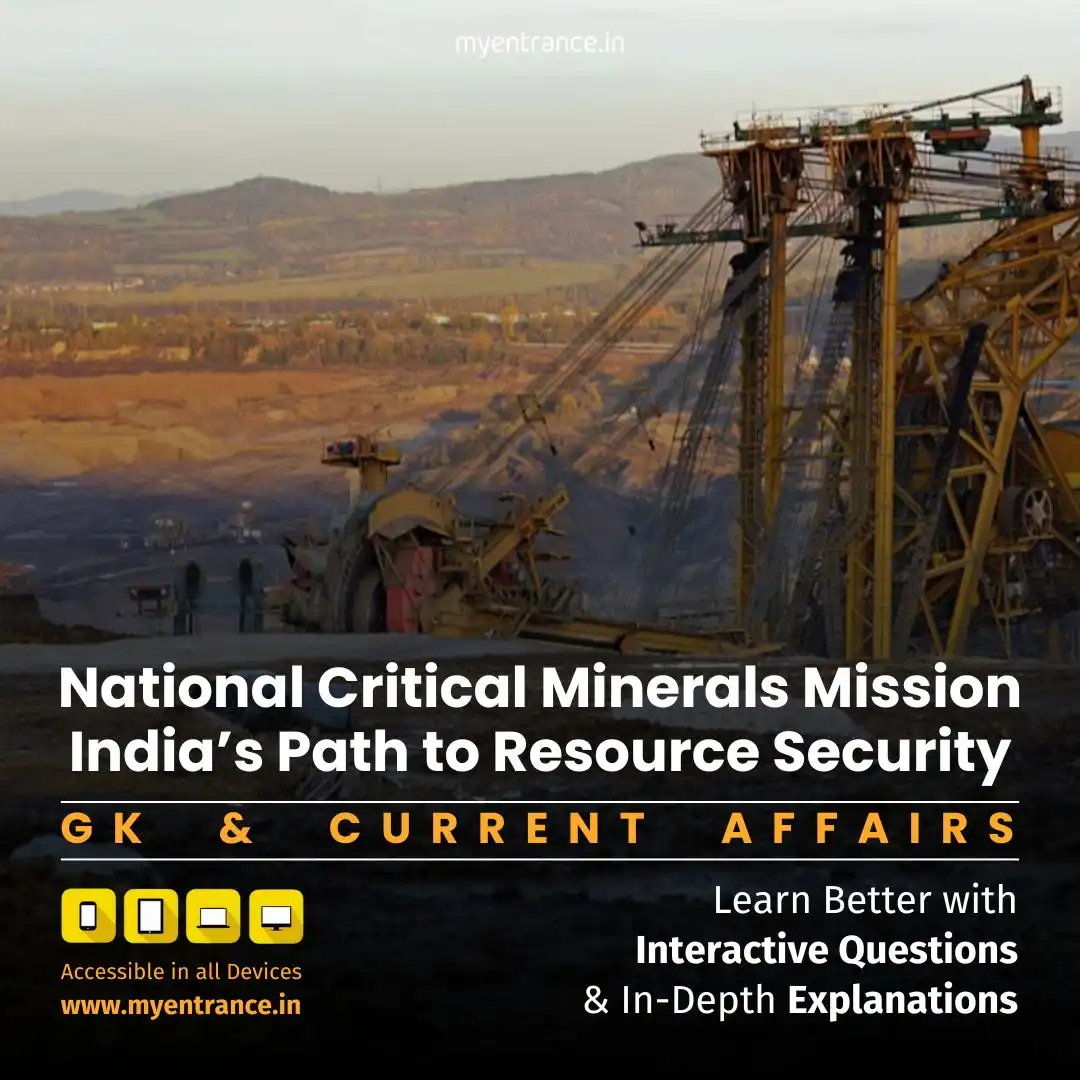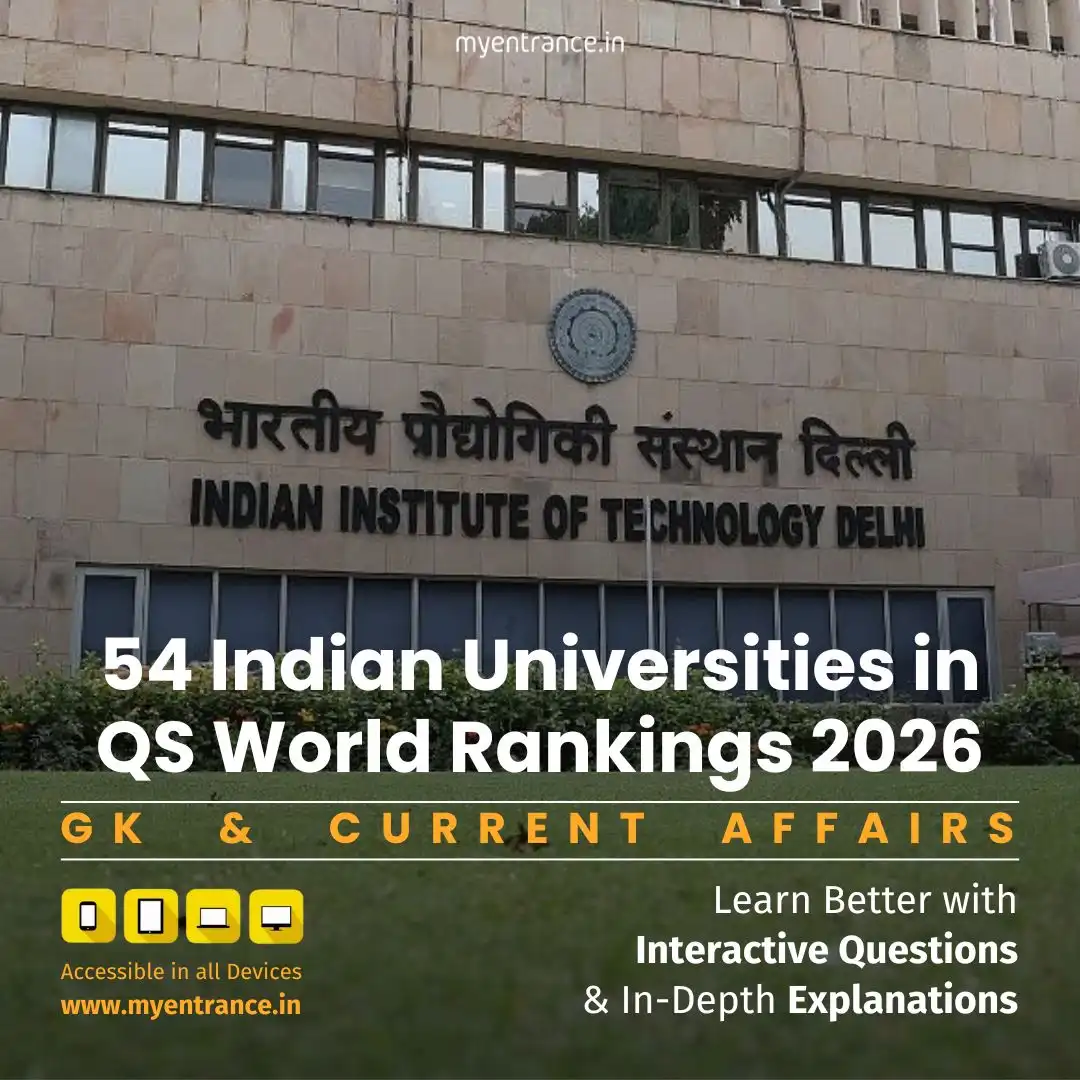Select Language
India’s Critical Minerals Crisis: Why Self-Reliance is Non-Negotiable: Current Affairs & Competitive Exam Prep
Critical minerals like lithium and rare earth elements are the hidden foundation of India’s renewable energy, defense, and tech ambitions. Yet, supply chain vulnerabilities threaten economic security—making this a vital topic for competitive exams.

Why Critical Minerals Matter for India
Imagine powering electric vehicles, manufacturing solar panels, or building defense tech without lithium, cobalt, or rare earths. Impossible, right? These critical minerals are the invisible engines of India’s green transition and high-tech future. But here’s the crisis: over 70% of global supply is controlled by a handful of countries, leaving India vulnerable to shortages and price shocks.
The Geopolitical Battlefield
Global Dominance Games: China processes 90% of the world’s rare earth magnets—weaponsizing supply chains during trade wars.
US Desperation: From fast-tracking mining permits to eyeing Greenland’s resources, superpowers are scrambling for control.
India’s Wake-Up Call: Reliance on imports risks derailing ‘Make in India’ and ‘Atmanirbhar Bharat’.
National Critical Minerals Mission (NCMM): Key Goals
India’s response—the NCMM—aims to:
✅ Identify domestic reserves of 30 strategic minerals (e.g., lithium in Jammu & Kashmir).
✅ Boost R&D for sustainable mining and processing.
✅ Forge global partnerships to diversify supplies.
✅ Secure tech manufacturing (e.g., semiconductors, EV batteries).
Why Exam Aspirants Should Care
This isn’t just geopolitics—it’s core syllabus material:
GS Paper III: Resource mobilization, supply chain security, and green growth.
Current Affairs: China’s rare earth monopoly, India’s lithium discovery.
Economic Policy: Linking mineral security to job creation and industrial growth.
Green Energy’s Dirty Secret
Renewable tech is mineral-intensive:
Electric vehicles need 6x more minerals than conventional cars.
Solar panels demand silver, copper, and silicon.
AI/data centers guzzle copper for wiring and cooling.
*Without mineral independence, India’s 2070 net-zero goal remains a pipe dream.*
Sample Q&A for Exam Prep
Q: What defines a ‘critical mineral’?
A: Minerals essential for economic/national security with high supply risks (e.g., lithium, cobalt, rare earths), where limited global suppliers could disrupt industries.
Q: How does NCMM support ‘Make in India’?
A: By securing raw materials for electronics, EV, and defense manufacturing—reducing import dependence and boosting domestic production.
Q: Why is copper critical for AI infrastructure?
A: Copper’s unmatched electrical conductivity makes it vital for data centers, robotics, and digital connectivity systems.
Q: Rare earths vs. critical minerals—distinguish.
A: Rare earths (e.g., neodymium) are a subset of critical minerals used in magnets; critical minerals include broader resources (lithium, graphite).
Q: Which country dominates rare earth processing?
A: China controls 90% of rare earth refining, giving it leverage over global tech/defense supply chains.
Most Predicted Questions
Comprehensive study materials, Expert-guided tips & tricks, Mock tests and instant results.
Start your SSC, NIFT, NID, FDDI, PSC journey today with MyEntrance, your ultimate online coaching platform.















